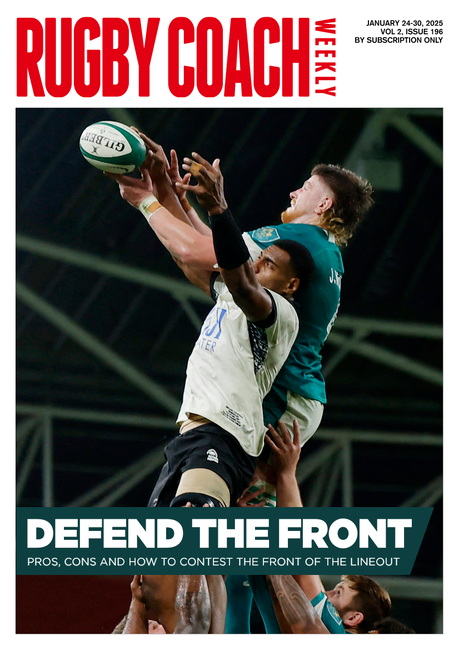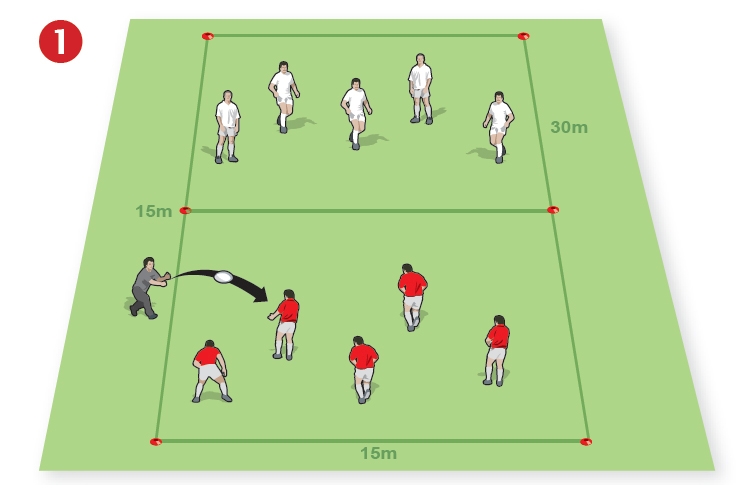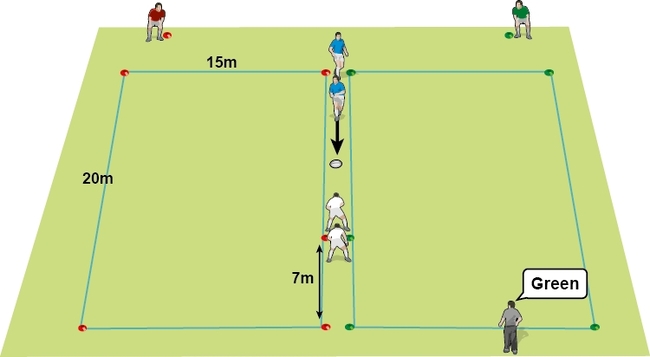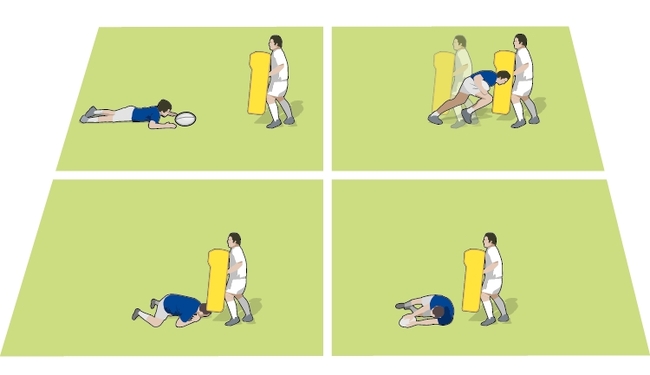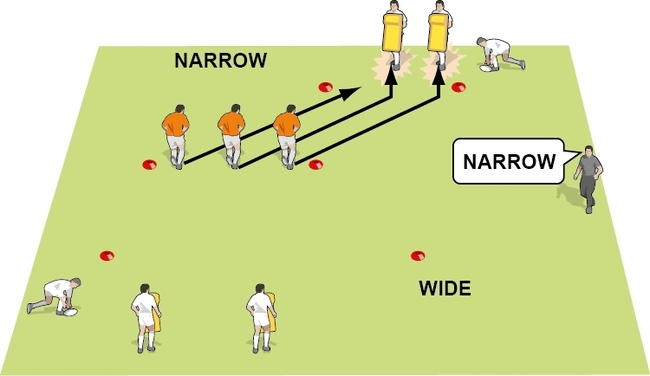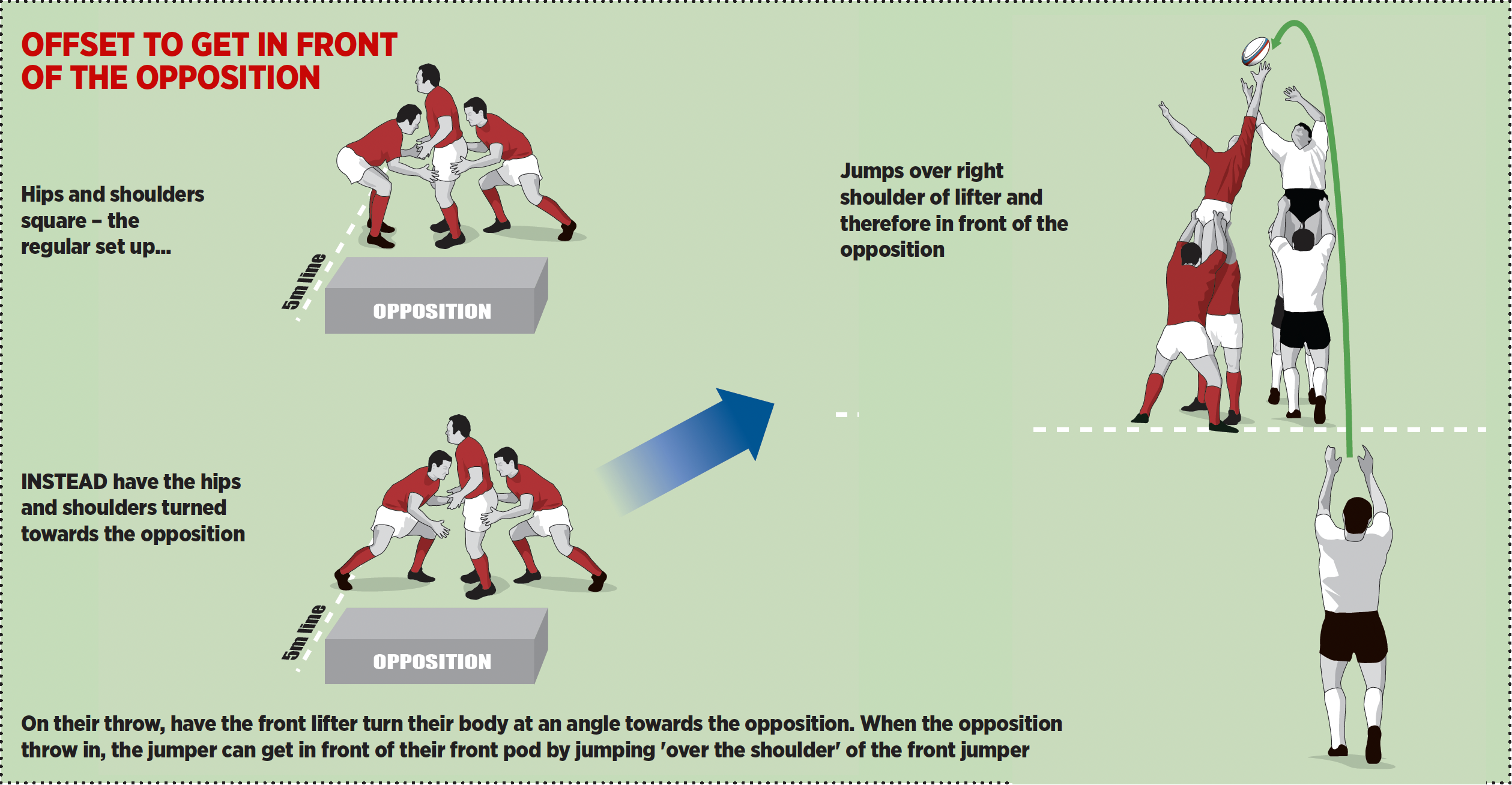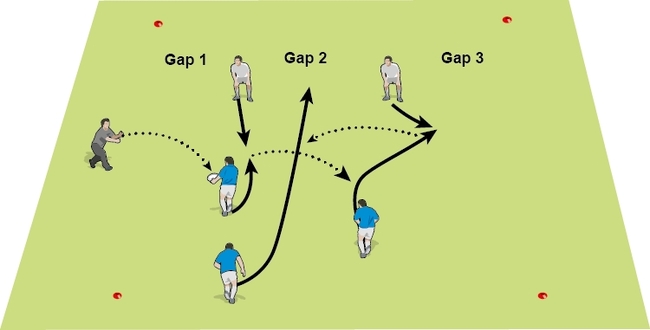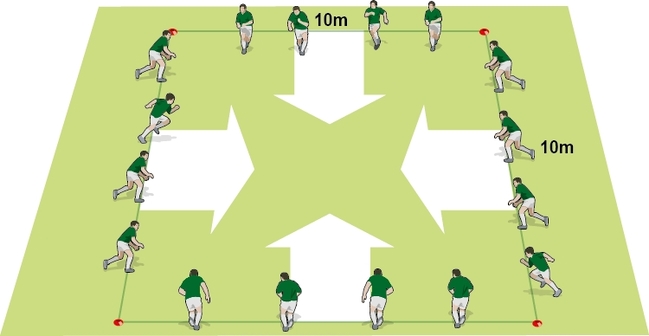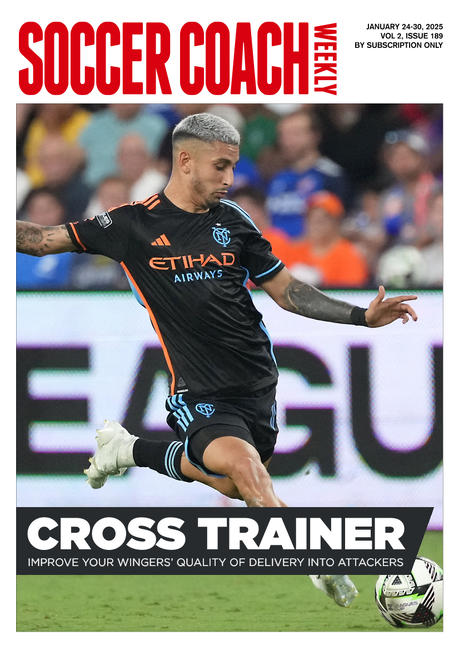Go forward attacking 10s
Many commentators often talk about how deep the attacking 10 stands to receive the ball from set pieces and phase play.
There are a number of factors that may affect your 10 in these situations:
- The length and quickness of the pass by 9.
- The ball handling ability and skill of 10.
- How composed your 10 is in matches.
- The team's position on the pitch.
- Whether it's a set piece or phase play, or quick ball or slow ball.
- The strengths in your back line and the weaknesses in your opponent's defence.
It is a lot to take in. Yet your 10 still has to decide on a starting point before he takes the ball.
Your 10's starting point can be as far or near the opponents as 10 wants, but you should always look for 10 to be moving forward on to the ball, even if it is only a couple of steps. The only time this may not take place is if he is kicking.
10's starting position
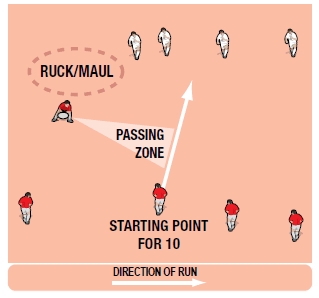 |
The triangle in the picture outlines different receiving positions in 9's "passing zone". Deeper passes allow more time for 10 and his team mates before they meet the opposition. However, they are further away from the gain line.
Taking a flatter pass certainly means more pressure from the defence, but is great for reaching the gain line quickly and enabling your team to go forward.
Practise the various options with your 10 and work out what is best for him and the team. Placing cones at different receiving points will help you and the 10 decide the optimum receiving point in the "passing zone", and from how far back he needs to start his run.
Newsletter Sign Up
Coaches Testimonials

Gerald Kearney, Downtown Las Vegas Soccer Club

Paul Butler, Florida, USA

Rick Shields, Springboro, USA

Tony Green, Pierrefonds Titans, Quebec, Canada
Subscribe Today
Be a more effective, more successful rugby coach
In a recent survey 89% of subscribers said Rugby Coach Weekly makes them more confident, 91% said Rugby Coach Weekly makes them a more effective coach and 93% said Rugby Coach Weekly makes them more inspired.
Get Weekly Inspiration
All the latest techniques and approaches
Rugby Coach Weekly offers proven and easy to use rugby drills, coaching sessions, practice plans, small-sided games, warm-ups, training tips and advice.
We've been at the cutting edge of rugby coaching since we launched in 2005, creating resources for the grassroots youth coach, following best practice from around the world and insights from the professional game.


